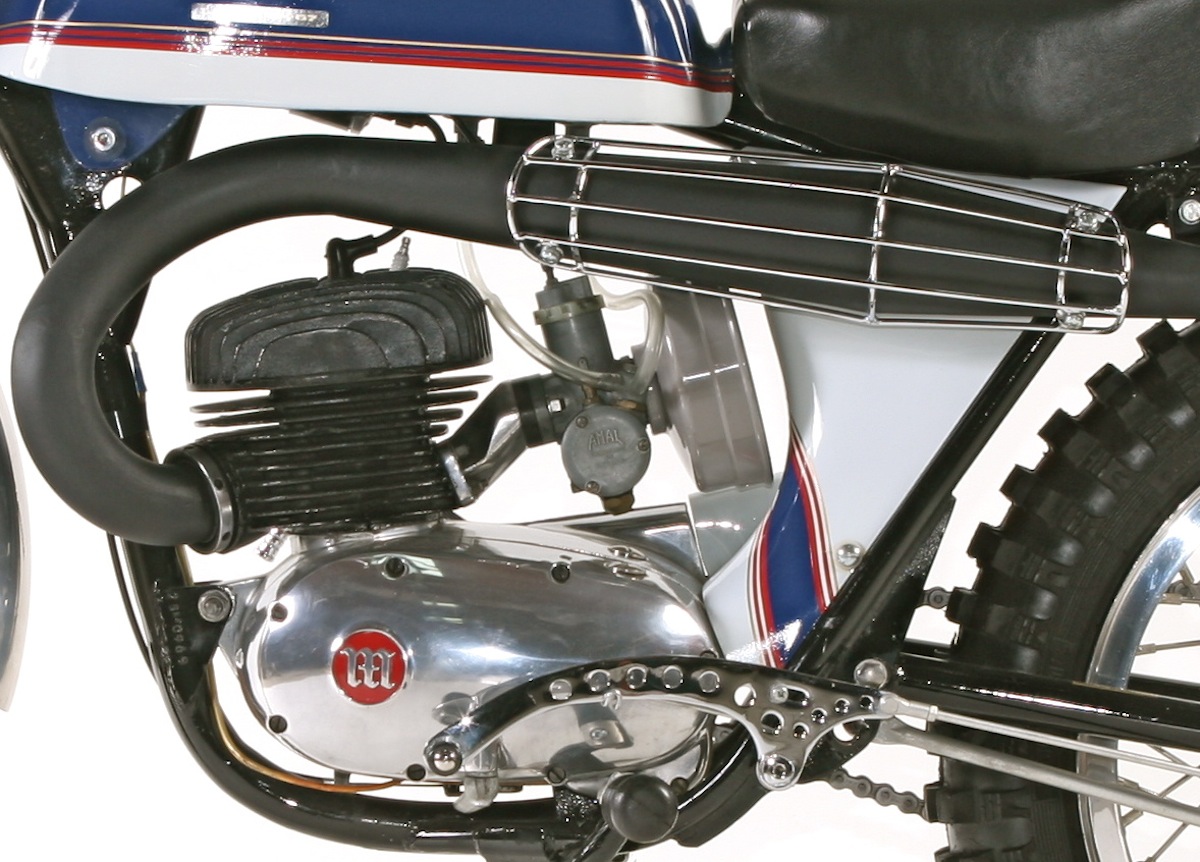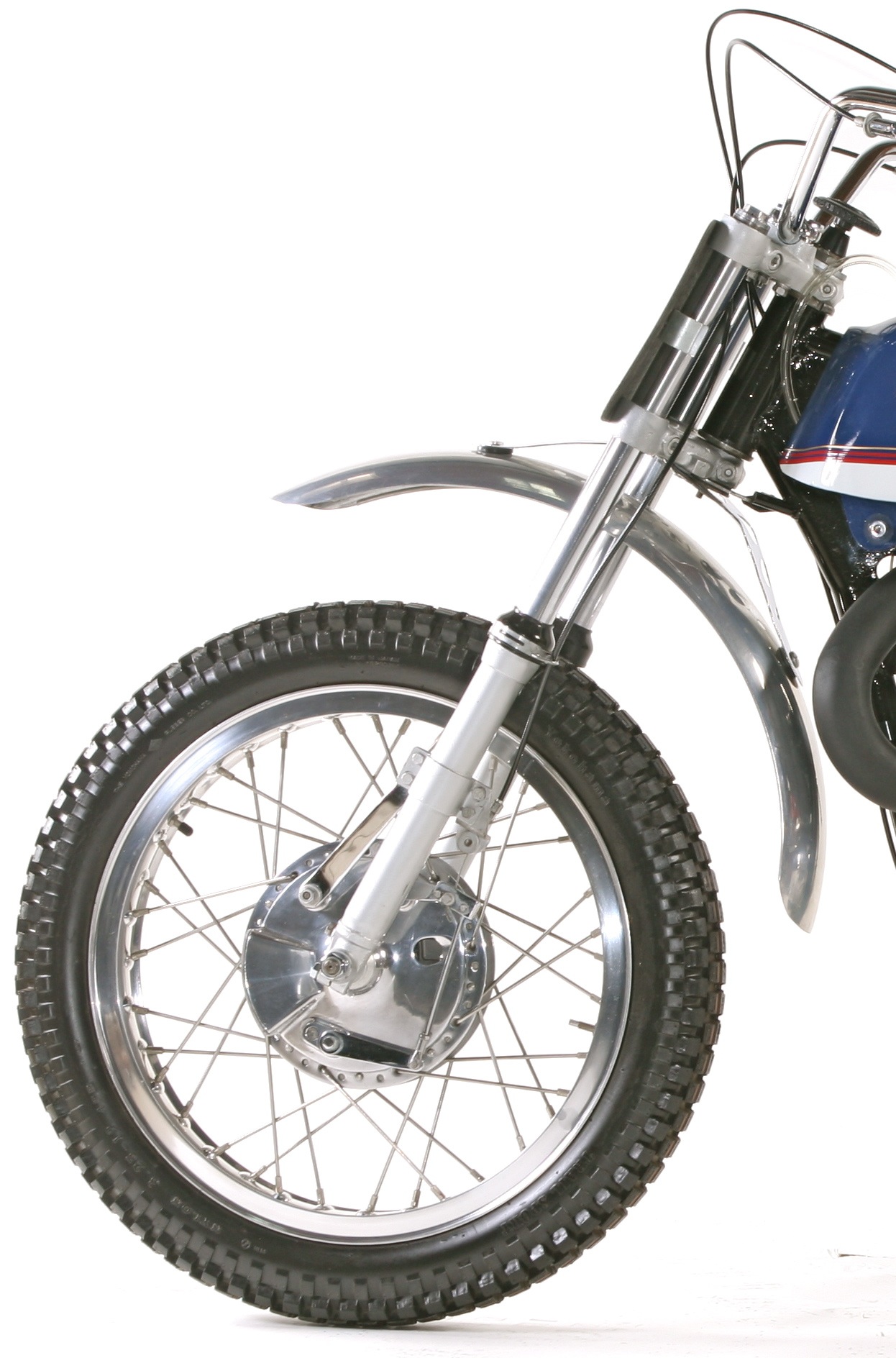CLASSIC MOTOCROSS IRON: 1967 MONTESA 250 LACROSSE
 BY TOM WHITE
BY TOM WHITE
In 1963, American entrepreneur Kim Kimball, in association with actor Steve McQueen, began importing the 1963 Montesa Impala 175cc Cross to the USA. The small operation that started in Kimball’s garage would grow to the point where Montesa had 350 dealers in the United States. “Viva Montesa” had become a reality. Race car driver Dan Gurney and Formula I Champion Phil Hill became major stockholders.

The 250cc LaCrosse model was introduced in 1967 and was aimed primarily at the scrambles market in the USA. Scrambles tracks were smoother than the typical European motocross tracks. The LaCrosse had good power, used a 19-inch universal front tire that worked well on groomed tracks, and, with its swept-back handlebars, was a versatile slider. Reliability could, however, be an issue, much of this attributable to Spanish metallurgy that yielded soft parts. Typical of Spanish bikes, the Montesa had good fit and finish, was visually appealing, and looked “fast” standing still. Total LaCrosse production from 1966 to 1967 was 1333 units.
The LaCrosse had a beautiful fiberglass tank with a shroud behind the Amal Monoblock carburetor. These items are nearly impossible to find but not that hard to duplicate. The forks are a Betor copy of the Ceriani motocross fork, and the rims are Akronts. The front hub is large with a big scoop to bring air to the double-leading shoe drum brakes. The alloy fenders are unique to the Montesa, so finding a LaCrosse with fenders in good condition is difficult. Unfortunately, Montesas have never been a highly sought-after item for AHRMA racers. Collectors almost never find LaCrosse models for sale. Most of them must have ended up in dumpsters when the rod bearings tied up (quite common). A 1967 LaCrosse sold at the 2021 Mecum Motorcycle auction for $13,200.

Motocross success would not come until 1968 when the Montesa replaced the LaCrosse with the Montesa Cappra model and riders John DeSoto and Ron Nelson were hired as pilots.
By 1981, Spain’s economic unrest led to labor strikes and Montesa needed an influx of capital to survive. They stayed in business thanks to government loans and selling a portion of the company to Honda (with a guarantee that Honda would not end production in Spain). In 1986, Honda bought out the remaining shares from founder Pedro Permanyer’s descendants, resulting in Honda owning 85 percent of Montesa. The last Montesa-powered bike out of the factory was the 1993 Cota trials bike—all Montesa trials bikes since 1994 have had Honda engines.
The 250cc LaCrosse model was introduced in 1967 and was aimed primarily at the scrambles market in the USA. Scrambles tracks were smoother than the typical European motocross track. The LaCrosse had good power, used a 19-inch universal front tire that worked well on groomed tracks, and (with its swept back handlebars) was a versatile slider. Reliability could, however, be an issue, much of this attributable to Spanish metallurgy that yielded soft parts. Typically Spanish, the Montesa had good fit and finish, was attractive, and looked “fast” standing still.
Montesas have never been highly sought after by collectors. You almost never find the LaCrosse model for sale. Most of them had rod bearing failures. This Early Years of Motocross Museum LaCrosse is valued at $7500 (the $13,200 Mecums bike is the exception). Total LaCrosse production was 1333 units from 1966 to 1967. It was replaced by the Cappra in 1968. Collectors should always look for the LaCrosse fiberglass tank and shroud. These items are nearly impossible to find, but not that hard to duplicate. The forks are a Betor copy of the Ceriani motocross fork, and the rims are Akronts. The front hub has a scoop to funnel air to the drum brakes.
For more info on classic bikes go to www.earlyyearsofmx.com





Comments are closed.